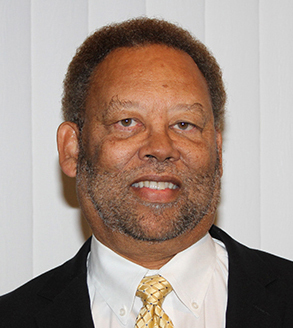By: Darryl White Sr., Special to California Black Media Partners
As we celebrate the 159th anniversary of Juneteenth, I cannot help but think of how far we still have to go to reach a level of equity in America. The cornerstone of slavery was illiteracy among enslaved populations. Slave owners did everything they could to keep slaves ignorant and illiterate, often imposing severe penalties for literacy among slaves and those who taught them. They realized early that knowledge meant power, and maintaining slavery required policies and laws that promoted high rates of illiteracy among enslaved populations throughout America.
Current statistics continue to paint a stark picture of literacy proficiency among California’s Black third-grade students. Today, only 27% are meeting or exceeding the English language arts state standards. Even more disturbingly, since 2018, scores have plummeted by four percentage points. Clearly, the post-COVID era has exacerbated an already dire situation.
Reading develops essential skills necessary for participating in American society, democracy, and the capitalist system. It enhances concentration, intellectual development, higher-order thinking, imagination, and creativity. Moreover, it helps individuals understand the world around them, allowing them to take advantage of available knowledge and opportunities. Those who read well tend to function more effectively in American society and advance more quickly. Systems of advancement are often centered around testing. For instance, students must take the SAT and compete with others to enter higher education. Those who cannot not read well, regardless of their true aptitude, perform poorly on the SAT. Their scores reinforce the false belief that the SAT determines inherent intelligence.
Today, if high schools graduated highly literate Black students, graduation day would be a jubilant celebration akin to Juneteenth. Just as the Emancipation Proclamation and the 13th Amendment provided access to civil rights, high literacy rates empower individuals to fully exercise these rights. Literacy opens doors to voting, fair trials, government employment, public facility access, housing, freedom of religion, and public education–transforming these rights from mere words into tangible opportunities. In this way, achieving high literacy rates is a modern emancipation, granting students the tools to realize the full promise of their civil rights.
In 2000, the National Reading Panel, a government-formed entity, conducted analysis to determine the most effective approach to teaching children how to read. Their findings–informed by rigorous, interdisciplinary scientific research from educators, psychologists, linguists, neuroscientists, and cognitive scientists–outlined five critical areas of reading instruction based on how a child best learns to read: (1) phonemic awareness, (2) phonics, (3) vocabulary, (4) fluency, and (5) comprehension. Moreover, the analysis advocates for the inclusion of evidence-based literacy instruction principles in teacher training programs to ensure educators are equipped to teach our children effectively.
Across seventeen states (and counting), legislation has been introduced to embrace the principles supported by the National Reading Panel and other literacy experts. Now, California stands poised to follow suit. The Black Parallel School Board fully supported Assembly Bill 2222 (Rubio), which introduced legislation in February 2024 requiring all California public elementary schools use evidence-based reading instructional materials and train educators on providing evidence-based early literacy instruction. Unfortunately, the 2024 version of the bill died in the Assembly without a hearing. We will again support the 2025 version of the bill because the cause is too important. Our children deserve nothing less.
Learning to read is a civil right. Therefore, the movement to ensure that all students learn to read well can be seen as the catalyst to emancipate BIPOC people trapped at the lower rungs of the education ladder. Until we assure every parent/caregiver in California that their public education system can and will prioritize teaching their children to read, Black children will continue to experience high rates of illiteracy and inequity.
Just as the Emancipation Proclamation freed enslaved individuals, evidence-based early literacy instruction will free BIPOC people from the historical and cultural enslavement of lower-class citizenship and liberate students from educational inequity, empowering them to fully participate in society and achieve their potential. The right to Free Appropriate Public Education (FAPE) is meaningless if an educational system created through civil rights fails to promote literacy, as it has then certainly failed to educate.
About the Author
Darryl White Sr. has been a teacher, curriculum specialist, race/human relations/equity trainer, and inner-city elementary, middle, and high school administrator. As a middle school principal, he provided the leadership to move Vallejo’s lowest achieving middle school to the city’s best (includes charter schools) in only three years while improving the school’s Academic Performance Index (API) over 100 points.






